Hoya retusa is one of the simplest plants to care for, but it is also attractive and elegant enough to pique your attention. This plant is an evergreen flowering plant vine that stands out with its flat, slim foliage and long, slender vine-like, distinct stems. They look best in hanging containers, and if given the right conditions, they may trail throughout the house. Read this Hoya Retusa care guide and learn how to properly take care of this beautiful plant.
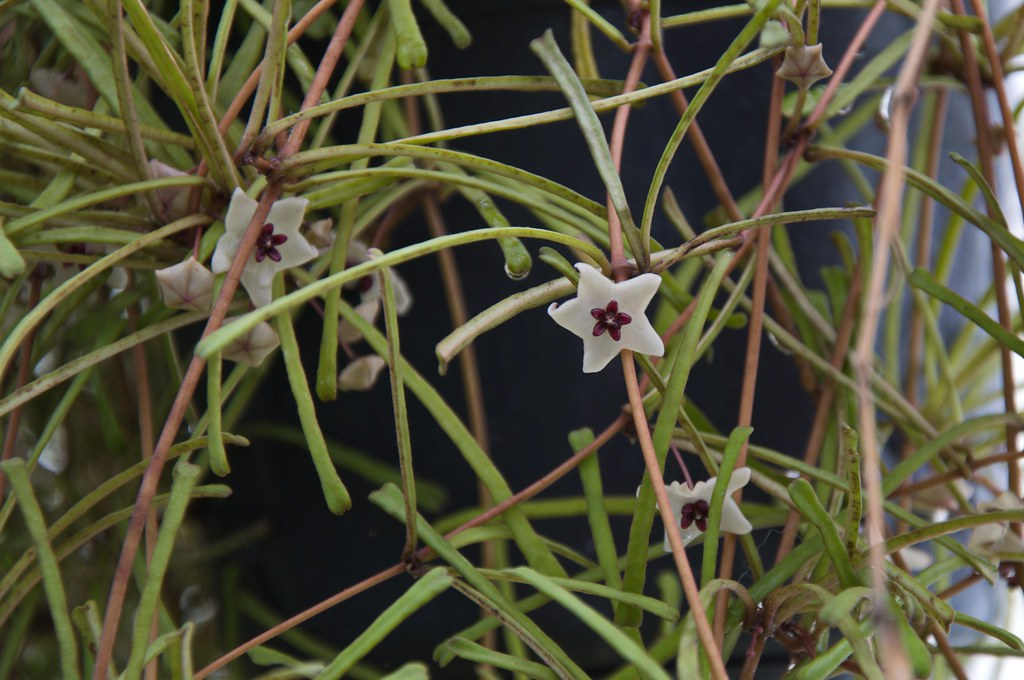
If you want to learn more about this dashing tropical plant, you’re in the right place. Let us explore Hoya Retusa and discover more in this article.
Hoya Retusa Profile
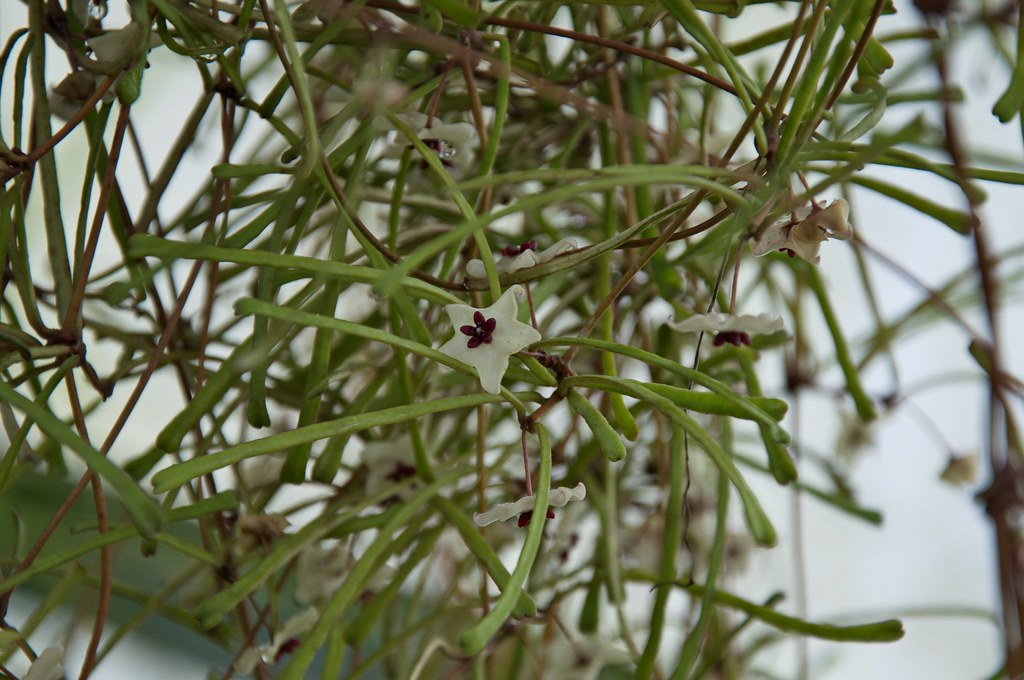
General Information
Hoya retusa is an evergreen perennial vine species of flowering plant in the genus Hoya, which belongs to the Apocynaceae family and is prevalent in Southeast Asia. It’s an epiphyte houseplant, which means it grows on the surface of another plant. This plant is also known as Grass-leafed, Hoya Wax Plant, or Porcelain Plant.
The hard-to-find, one-of-a-kind, and stunning Hoya retusa will instantly become the center of attention wherever you display it. Its green jumble of slender stick-like foliage, long and thin vine-like stems and creamy white and red blossoms transform your garden into a premium beauty.
With the right environmental conditions and proper care, this plant may reach a height and width of 15 to 20 inches.
Etymology
The genus name “Hoya” was coined by botanist Robert Brown, honoring his botanist friend, Thomas Hoy. On the other hand, the specific epithet “Retusa” is derived from the word “retuse” which means “notch,” referring to the depression in the middle of each leaf.
Flowering
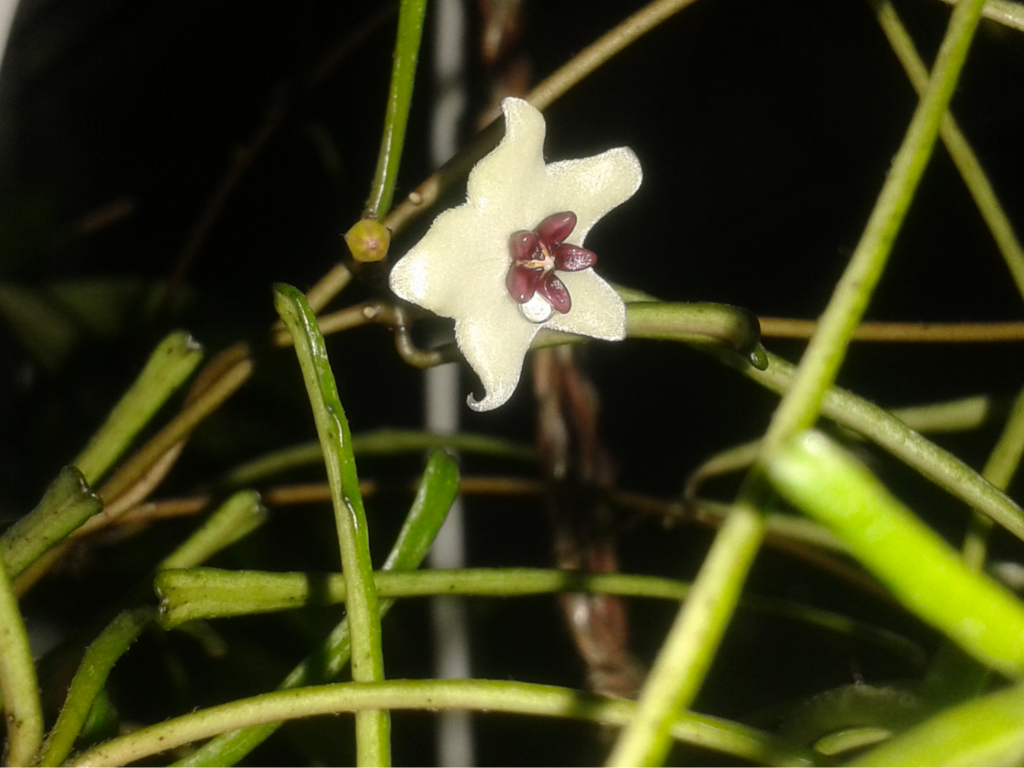
Hoya retusa plants produce petite star-shaped waxy, creamy white and red blooms with a distinctive fragrance that is lemon-like. Their diameter is about 0.5 cm. These little white fragrant Hoya flowers with reddish coronas grow to decorate the plant throughout the months.
These exquisite flowers appear as the plant matures, and they are at their most beautiful throughout the spring and summer blooming seasons.
Season Of Interest And Purchasing
The spring and summer blooming seasons are when they are most beautiful and the best time to purchase them. Individual flowers with red centers are produced when this houseplant blooms, adding magnificent appeal to your interior settings. It is a low-maintenance plant that is excellent for novices.
You may get this magnificent houseplant from nurseries and your local garden stores.
Growth
A mature Retusa plant is roughly about the height of 15 to 20 inches. This particular species grows downwards and is generally a low-lying plant. Indoors, it grows up to 6 feet, but in its natural environment, it can reach up to 20 feet in length.
Hoya Retusa Overview
| Scientific name | Hoya retusa |
| Common name/s | Grass-Leafed Hoya, Wax Plant, Wax Flower, Porcelain Flower |
| Family | Apocynaceae |
| Growth Habit | Herbaceous vine |
| Height and Spread | up to 20 feet in length in the wild, up to 6 feet indoors |
| Classification based on life cycle | Perennial |
| Origin and Distribution | Widely distributed in Southeast Asia |
| Climate Zone | Generally mild climate |
| USDA Plant Hardiness Zone | USDA Zone 9-11 |
| Color | Green leaves that are flat, slim foliage and long, slender vine-like, distinct stems |
RELATED: Hoya Krimson Queen: The #1 Most Informative Care, Propagation, and Watering Guide
Care Tips
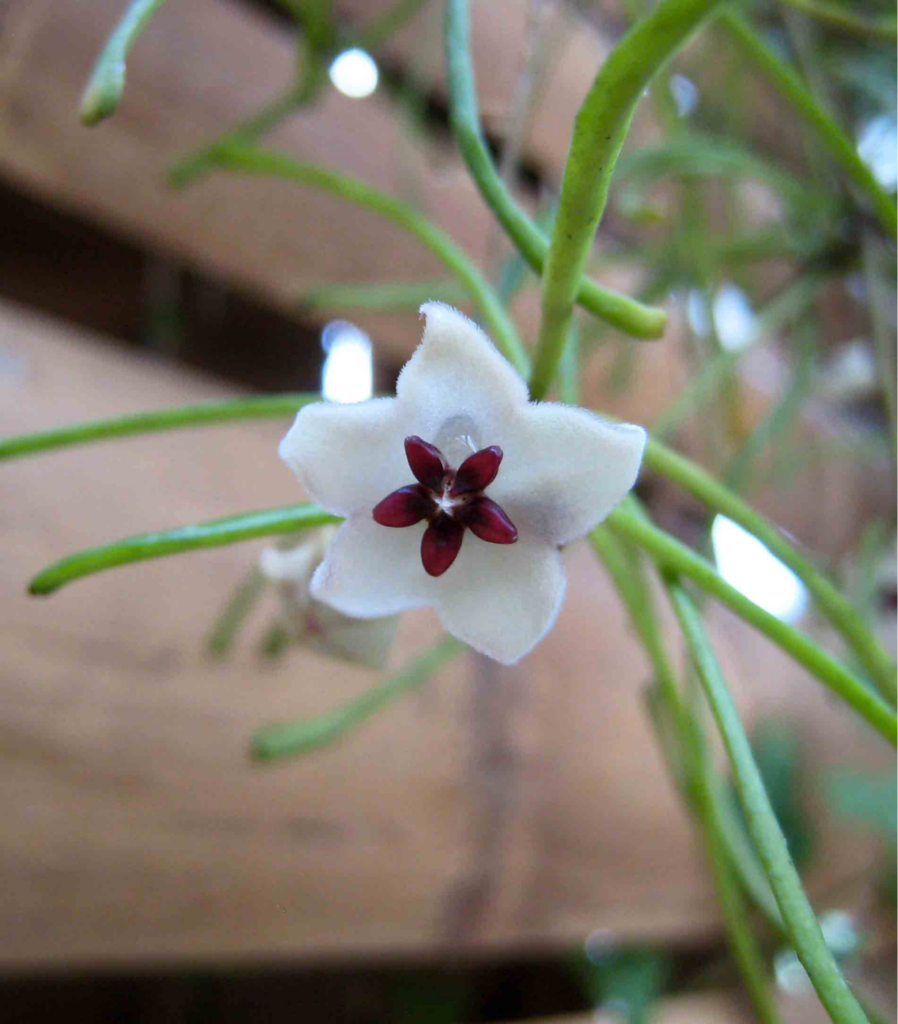
Light Requirement
Hoya Retusa grows best in medium to bright indirect light. It can thrive either in natural or artificial light. Low-lighting rarely has a favorable effect on foliage. Avoid direct sunlight, which can cause sunburn and scorching of leaves.
If you are growing this indoors, it prefers south-facing windows or east-facing windows. Both of these locations are fine for your Hoya. However, if you receive a lot of light from it, try to place your plant further away from a window.
Temperature Requirement
Hoya retusa thrives best in warm temperatures. Therefore, temperatures ranging from 50 to 80 degrees Fahrenheit are ideal. However, they are tropical plants, so they loathe extreme temperature fluctuations since they can stunt growth, droop their leaves, and leave them limp.
However, during the blooming season, the ideal temperature required by these plants is around 50 degrees Fahrenheit.
Furthermore, very cold temperatures might cause leaf yellowing and slowed growth.
RELATED: Calcium for Houseplants: Why is It Important for Growth and Reproduction?
Water Requirement
Watering Hoya retusa properly is one of the most crucial aspects of care. It is a drought-tolerant plant that requires normal watering. Your Hoya retusa should be watered only when the top three to four inches of soil is fully dry. Use a room temperature water that has no trace of heavy metal elements.
Another aspect that influences water demand is the substrate. Adequate soil drainage and water balance are important considerations while watering your Hoya retusa. If your soil is light, water it frequently; if it is heavy, water it less to avoid waterlogged soil and eventual root rot.
Humidity Requirement
The humidity level affects the success of cultivating Wax Plants. These plants are native to the tropics and thrive in normal, 40% humidity. They can withstand higher levels, but not if the humidity is allowed to fall until the air is dry. Thus, maintaining reasonable humidity levels is critical for good growth and development.
Soil Requirement
As with other Hoyas, you should provide your Hoya retusa with an organic, well-draining soil mix to allow this plant to bloom well. Also, ensure the soil is rich in essential nutrients. The pH should be neutral; around 6-7 is ideal. A light, loose potting mix made from cactus soil, orchid mix, and perlite is an excellent method to achieve this.
Generally for Hoyas, an efficient soil mix must have good drainage, water retention, and aeration properties.
Fertilizer Requirement
Hoyas are low-maintenance plants that do not require much fertilizer to thrive. A balanced fertilizer (10-10-10) NPK ratio is necessary. However, you may opt to fertilize the Hoya retusa plant in late April. Begin fertilizing your Hoya retusa and continue throughout the growing season to encourage the prolific growth rate.
Try to feed organic fertilizer to this plant at most once a month.
Space Requirement
To guarantee that this plant receives the proper amount of light, the Hoya Retusa prefers a place with bright indirect light and the shade of south-facing or east-facing windows. Plants thrive in ceramic, terracotta pots, or hanging planters with large drainage holes at the base. This pot will aid in accelerating its growth pace.
In addition, the Hoya Retusa should be separated from its neighbors by at least 2.5 feet since it may grow to be quite large if allowed enough room to climb.
RELATED: 18 Easy Common Houseplants You Must Have In You Home
Growing And Planting Tips
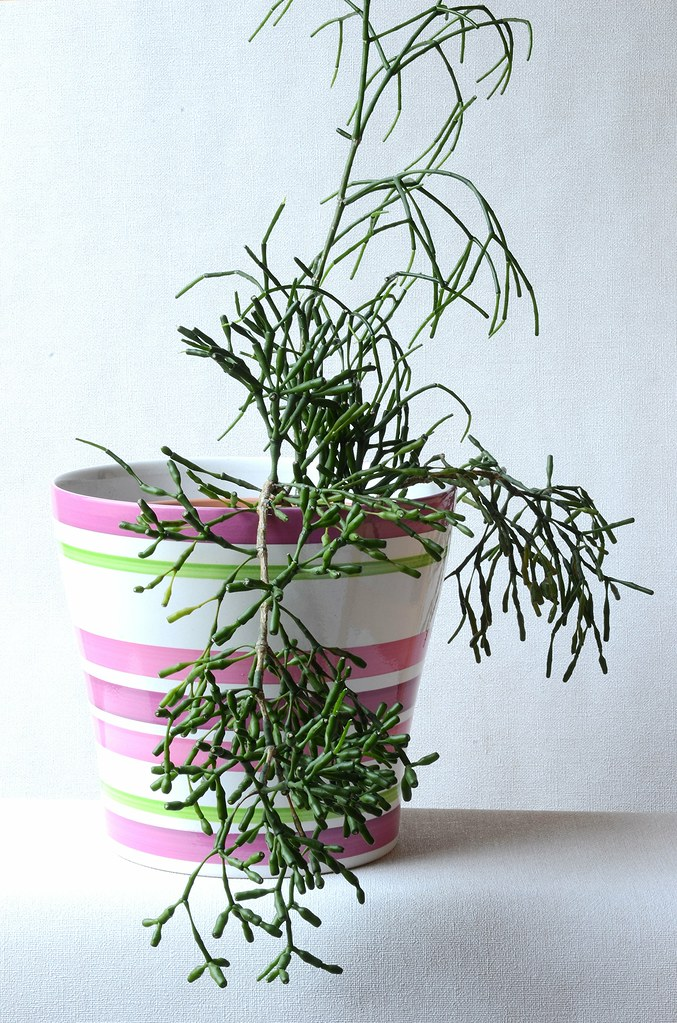
Propagation
Hoya Retusa propagation is relatively simple. Just like other Hoyas, the propagation of this Hoya species is done via stem cuttings. The detailed steps are as follows:
Propagation by stem-cuttings
Hoya retusa is a plant that reproduces asexually. As a result, you must propagate it via root or stem cutting. Cutting the stems from a mother plant is the simplest technique to propagate a Hoya retusa.
Stem-cuttings require the following steps:
- Take a cutting from your Retusa first. The stem should be around seven inches long and trimmed as near to the base as possible. Check that the cutting-edge roots have at least a few nodes and at least two or three leaves.
- In the area where you cut the stem, apply a rooting hormone. The cutting should be placed on a wet medium. Place the rooting plant in a pot or terracotta in a warm area with adequate indirect light.
- You can transplant your new Hoya retusa in a pot with well-draining soil when you see new roots growing, and it extends to 1 inch. It would be best if you exercised extreme caution since the newborn plant is quite sensitive.
- Expect roots to grow for a few weeks. For the following several months, keep a close eye on it. Don’t water it heavily during this time period.
- Fertilize it on average.
Pruning
Hoya retusa has a moderate growth rate and requires minimal trimming. Trim using sterile scissors or pruning shears once a year, just before the growth season. Remove the weak, damaged, and discolored leaves and stems with sterilized knives.
Cutting excess growth and leaves will encourage the Hoya plant to develop by redirecting its energy. In addition, it will help them grow and appear better by preserving their green jumble of slender stick-like leaves, long and thin vine-like stems, and creamy white and red flowers.
Potting And Repotting
These Hoya plants thrive in hanging planters, terracotta pots, or ceramic pots. To avoid root rot, which is a common problem with the Hoya retusa plant, use a planter or container with well-drained holes.
At the end of the growing season, Retusa has to be potted. Every two years, you should repot your Wax Plant to prevent issues like stunted growth from being fully root-bound or the soil losing part of its nutrients during drought.
Hoya retusa Care Guide
| Light | Bright indirect light |
| Temperature | Intermediate to warm, 50-80 degrees Fahrenheit |
| Water | Once a week, increased in summer, decreased in winter |
| Soil | Airy, well-draining soil, loose |
| Fertilization | Regular household fertilizer, once a month |
| Space | Plenty of space to creep or climb |
| Propagation | Via stem cuttings |
| Blooming | Spring and summer |
| Pruning | Minimal pruning |
| Potting | Regular potting mix, use of peat moss, perlite, coarse sand, gravel, vermiculite, humus, charcoal, orchid bark, coconut husk, and clay balls. |
Problems And Troubleshooting
Overwatering
Overwatering will probably drown your plant, causing it to limp with drooping yellow or brown leaves as opposed to dry, crispy foliage. Lack of oxygen due to overly wet soil causes root rot and vigor loss in plants. Excessive water usage can lead to root rot, sogginess, and permanent root deterioration.
Consider altering the container into a well-draining one to enhance greater drainage and faster soil drying.
Some useful tips:
- Use a pot with at least one drainage hole.
- Use potting soil that drains well.
- Water only when the soil feels dry.
Underwatering
Hoyas prefer to stay mostly dry. However, they can also dry out if they are not watered enough. Therefore, another possible reason for your Hoya’s slow growth is a lack of water. Wrinkled leaves are sure that your plant is not getting enough water to maintain a normal growth rate.
Hoyas should be watered whenever the topsoil is completely dry. Depending on your environment, this can be one to three times a week. However, Hoyas are more sensitive to over-watering, so it is preferable to under-water rather than over-water.
Nutrient Deficiency
When Hoya retusa is deficient in necessary nutrients for growth, it may experience a nutrient shortage. Plants that are lacking in vital nutrients will not develop properly and exhibit a variety of symptoms such as a decreased amount of chlorophyll, stunted development, loss of plant tissue, or yellowing of the leaves.
Some useful suggestions:
- Indoor temperatures are good in general but avoid cold drafts and excessive heat.
- Keep your Hoya in filtered or indirect light.
- Use phosphorus-rich fertilizer instead of nitrogen- and potassium-rich fertilizer. Nitrogen (N), on the other hand, is mainly used to promote vegetative (leaf) growth.
- The best defense is to take great care of your indoor plant.
Flowering Problems
Hoya retusa must reach maturity before blooming. This normally indicates that it will take 5 to 7 years before the first bloom appears. Nevertheless, depending on the type, it can take the plant years to decide to bloom. A simple lack of light will frequently hamper the ability of this spectacular plant to bloom.
If buds break off before blooming, it’s possible that the potting medium was either too dry or too moist for too long.
Pests And Diseases
Hoyas attract pests. The most frequent pests that affect your Hoya retusa are mealybugs, spider mites, and scale. Furthermore, when a plant is stressed, it is more vulnerable to fungi, bacteria, and insects.
| Common Pests/Diseases | Symptoms | Treatment and Prevention |
Common diseases include crown rot, stem rot, root rot, leaf spot, fungal diseases, and Xanthomonas infection | Yellowish rimming around black or dark brown spots on leaves | Avoid overwatering. Keep soil dry. Avoid too high humidity.Proper ventilation is needed around the plant. Remove infected parts of fungal infections to avoid spreading |
| Common pests include mealybugs, spider mites, aphids, and scales | Visible insects on the surface | Spray plant with warm, soapy water. If infestation is present, use insecticide or neem oil. Use diatomaceous earth. |
Problems With People And Animals
Toxicity
The Hoya retusa, like other plants of its genus, is hazardous. Children or dogs should not ingest these plants since they generate a hazardous milky white sap. The sap is toxic to animals or humans and can make them unwell and have severe allergic reactions when ingested.
Hoya Plants Meaning And Symbolism
Hoyas produce lovely circular clusters of fragrant flowers. The wax plant represents wealth and safety. It is best given to people who you wish for safety at all times and prosperity in life.
| General Meaning | Wealth and safety |
| Symbolism | Prosperity and safety |
Landscaping And Gardening Ideas
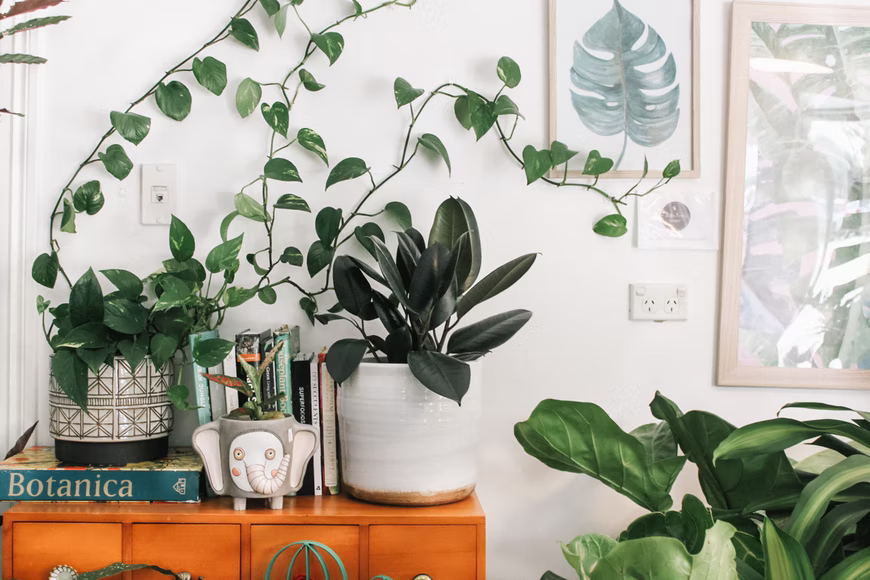
Companion Plants
Given that this type of plant likes to sprawl, the Retusa vine will thrive best when combined with other indoor plants that have lots of room in their containers. Cacti and succulents are good plant companions. They have a similar preference for warm areas and loose, well-draining soil with Hoya retusa.
Other suitable partners for Hoya retusa are the Chinese Evergreen or Ponytail Palm, which may be placed at the forefront of Retusa so that it has something to climb on as your plant grows higher. For your Hoyas, these plants make adorable little hiding spots.
Landscaping Ideas
The perfect place for your Hoyas is an east-going window with plenty of bright, indirect light. Most Hoya plants do well in particularly small pots and are especially well-suited to basket cultivation. They may be located everywhere to provide a natural look to your home.
If you put your Hoya outdoors, make sure it receives ample shade from direct sunlight. To create an accent in your spaces, you can grow your hoya plants on a trellis or in a basket, along with other vines. This will surely make your space vibrant and premium-looking.
| What to plant with | Cacti and succulents, Ponytail Palm, Chinese Evergreen, and other tropical vines such as neon pothos and prayer plants |
| What NOT to plant with | Basically nothing |
Conclusion
The epiphytic vine Hoya retusa is prized for its minimal care requirements, making it perfect for beginners. It is a stunning plant that attracts admiration, with unusual foliage and rich green leaves. Its rounded, notched leaf apex, long, thin stems, and flat, narrow foliage all add to its allure.
If you are thinking of starting a Hoya collection, do not ever miss the chance on getting this unique Hoya.
Frequently Asked Questions
Does the Hoya retusa grow fast?
The Hoya retusa is a mid to fast-growing vine assuming proper care and attention. Ensure that your plant receives adequate lighting, fertilizer, humidity, and watering frequency.
Does the Hoya retusa bloom?
Yes! Hoyas are flowering vines. They flower in the summer and spring seasons when temperatures rise and humidity levels in the environment increase. Proper light quality and amount are also critical for flowering since the flowering genes of the plant are light-activated.
Why is my Hoya retusa browning?
The browning of the plants can be due to several reasons. However, most of these symptoms are caused by water stress, particularly overwatering. Rectify your watering schedule if this is the leading cause.
However, too much light can also make your foliage brown. Make sure to place them in a bright indirect light setting to avoid having this problem.
How do you care for a Hoya retusa?
The care for Hoya retusa is fairly easy. A bright indirect light, high humidity, well-draining potting soil, and a proper watering schedule are a must to have a thriving plant. You may also need to feed your plant once a month to facilitate its growth and development.
Editor’s Recommendations
Philodendron Florida Ghost: The Ultimate Care, Propagation, and Watering Guide
The 28 Most Gorgeous Alocasia Types You Can Grow In Your Homes







